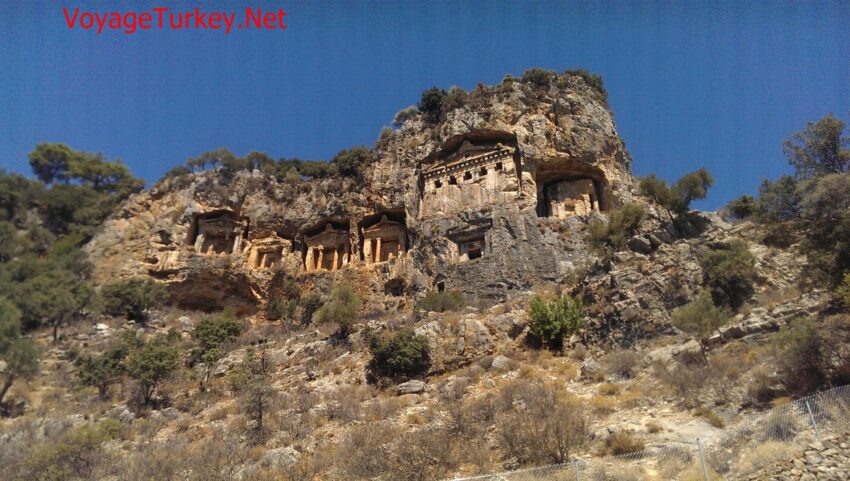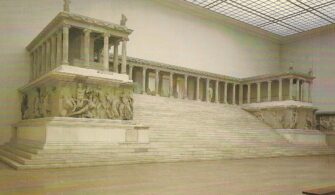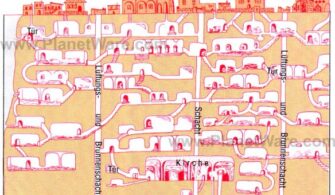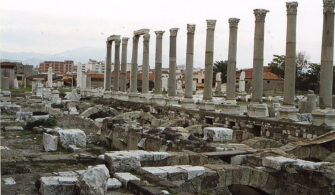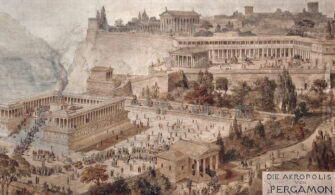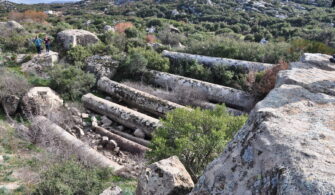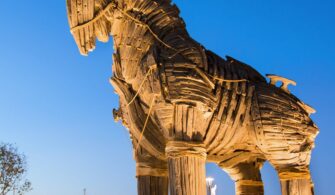Kaunos Ancient City
Kaunos, located in the Dalyan district of Muğla Province, is an ancient city with a history of 3 thousand years. Kaunos, thanks to the rock-cut tombs is one of Turkey’s most interesting historical sites. In fact, Kaunos, which was an important commercial port city known for its salt production and trade in ancient times, lost its port character as the sea filled with alluvium.
Kaunos was included on the UNESCO Tentative List in 2014 as a cultural site. The rock-cut tombs around it are worth seeing.
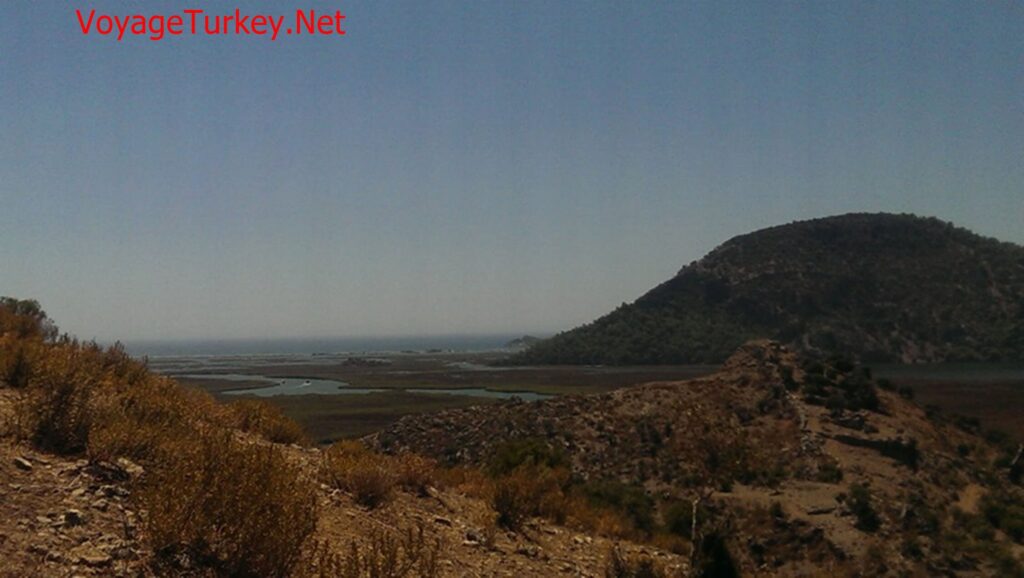
The name Kaunos is mentioned as a separate region between two important regions such as Caria and Lycia. This proves that Kaunos was the center of a region that bears its name and includes the cities and villages attached to it at that time.
It is known that Kaunos, which had been coining money on his own behalf, was an independent state for a time and that Pisilis, Sultaniye, and many small ancient cities were connected to Kaunos. The alphabet used by the people of Kaunos was similar to the Carian alphabet, except for the 5 letters that were not found in the Carians but only in the Kaunos.
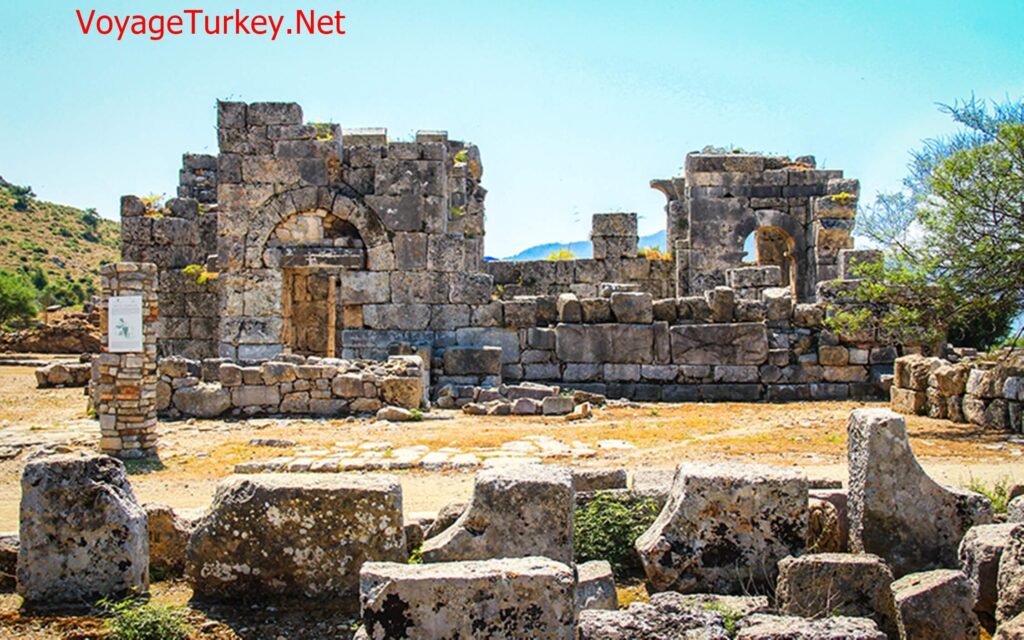
Location and Transportation of Kaunos Ancient City
Kaunos Ancient City, another name of which is Kbid, lies within the boundaries of Köyceğiz of Muğla Province.
P. Roos, a Swedish archaeologist, defined the historical boundaries of Kaunos as follows: “Starting from the Fethiye Bay at the north and Ancient City of Krya at the north of the bay; extending till Tlos at the 35 km east of Fethiye, Idyma at Gokova Bay at the west and Çamkoy located in the west of Urla which is little forward to north.”
You can reach Kaunos in 3 ways. The easiest of these is to cross the shore of the royal tombs to the opposite shore with the boat. If you choose this path, you can see the king’s tombs up close where you cross. Boats are waiting here and carrying passengers across the Dalyan Canal. The ancient city of Kaunos is reached by a ten-minute walk from the ruins of Dalyan.
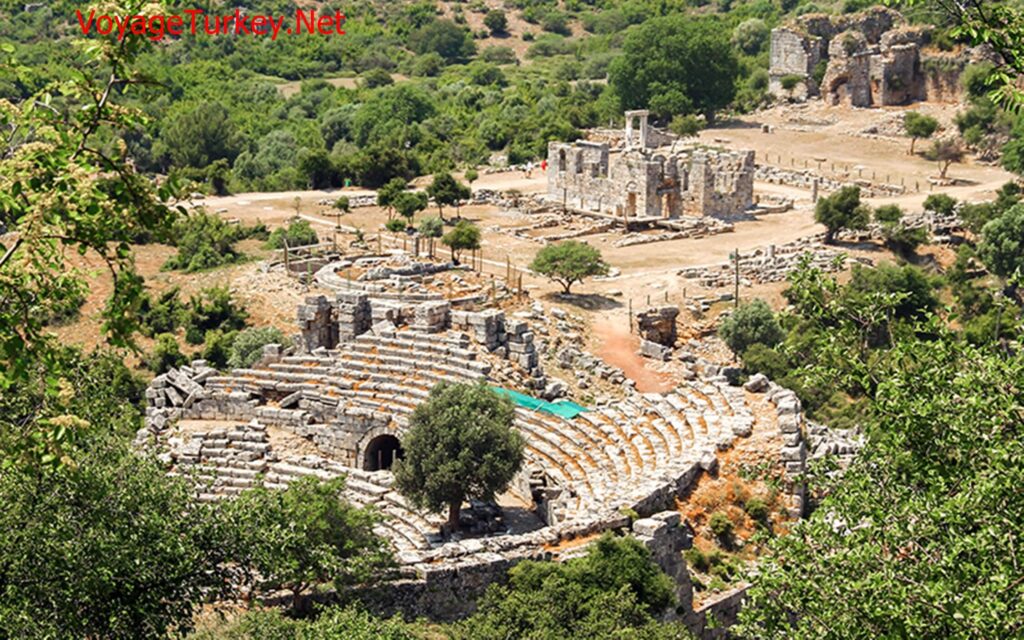
As a second way, yachts from the sea can anchor around the Delikli Island and take the boat to the lower entrance pier of Kaunos.
The third way is to go to the Archaeologists House by boat. A 5-minute walk will take you to the upper entrance.
History of the Kaunos Ancient City
It’s estimated that human activity in this region dates back to around the 10th century BC and Kaunians settled there beginning around the 6th century.
The name of the city is based on a legend. According to the story, the king of Caria Miletus had twin children. One of them is called Kaunos and the girl is called Byblis. Byblis falls in love with his brother Kaunos when she grows up. When Miletus, the king of Caria, learned about the improper relationship of Kaunos and his sister, he expelled Kaunos from the country. With the people he loved, Kaunos founded the ancient city of Kaunos. Byblis can’t bear this grief, he’s tired of crying. It is said that Dalyan’s maze-like channels consist of tears of Byblis. In another version of the story, Kaunos detests and escapes his sister’s love for him and found the ancient city of Kaunos.
However, archaeological findings show that the history of the city dates back to ancient times. The city was called Kbid until the 4th century BC. The city began to be called Kaunos from the 6th century BC. This situation shows that the name of the city was changed as it was applied in other Anatolian cities immediately after the city was colonized by the Hellenes.
According to Herodotus, the people of Kaunos were among the inhabitants of Caria, but they considered themselves Cretans.
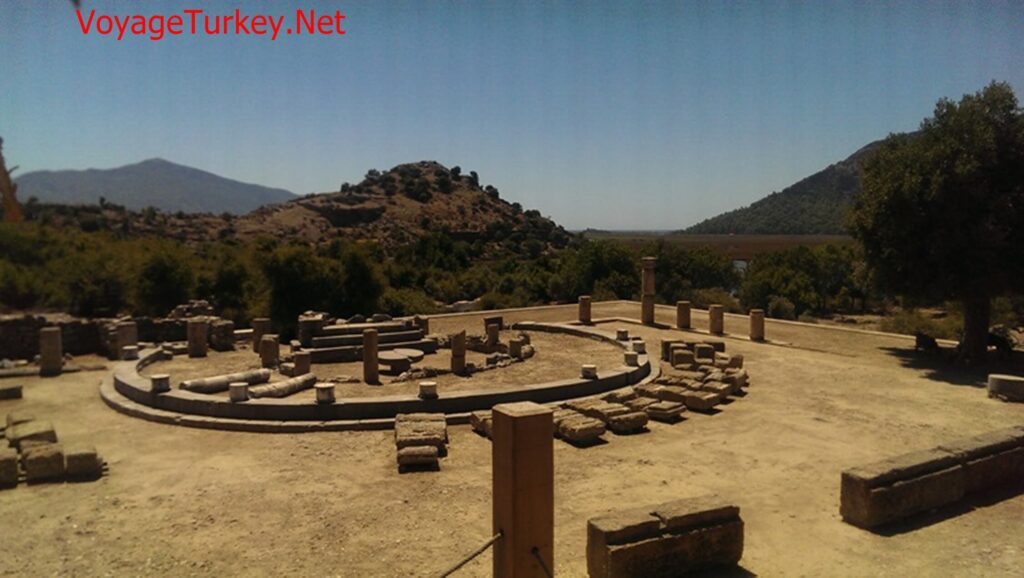
When the Persians conquered Anatolia completely, the city came under the rule of Mausolos, the Persian satrap of the Caria region. After Alexander the Great defeated the Persians in 334 BC, the city first came under the rule of Antigonos and then Ptolemy. Later, the city was under the reign of Rhodes, King of Pergamum and the Roman Empire. The city also has a long and important history in the Roman and Byzantine periods. Until the Middle Ages, the city was part of the Eastern Roman and Lycian Church Province.
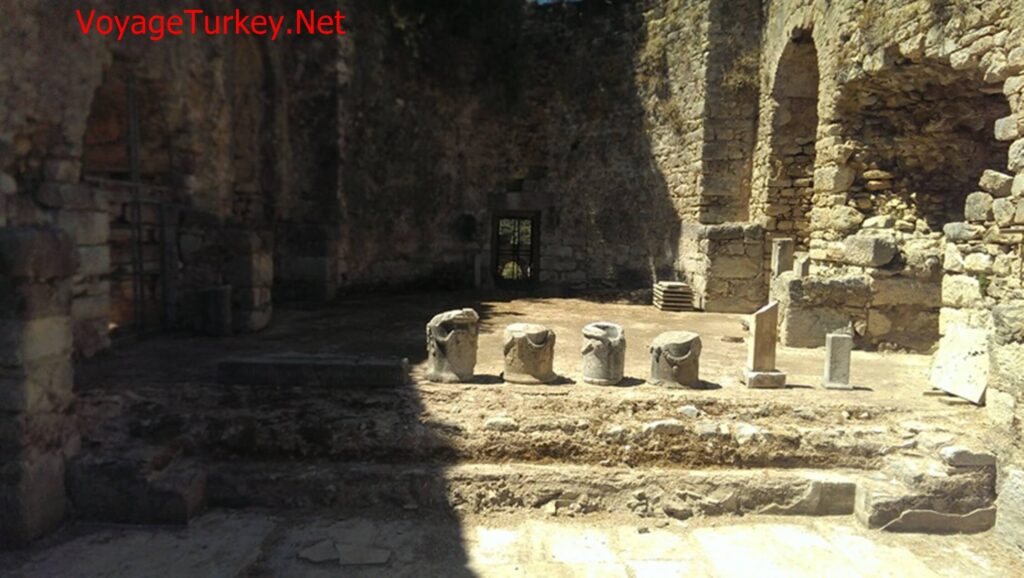
As a result of a major earthquake, in consequence of the withdrawal of the Dalaman Stream and the port of the city filled with sand (Kaunos is now 8 kilometers from the sea), commercial activities ceased in this city. The cessation of commercial activities caused the city to lose its importance. After the Byzantine Empire, the region where the city was located was under the administration of Turkish states.
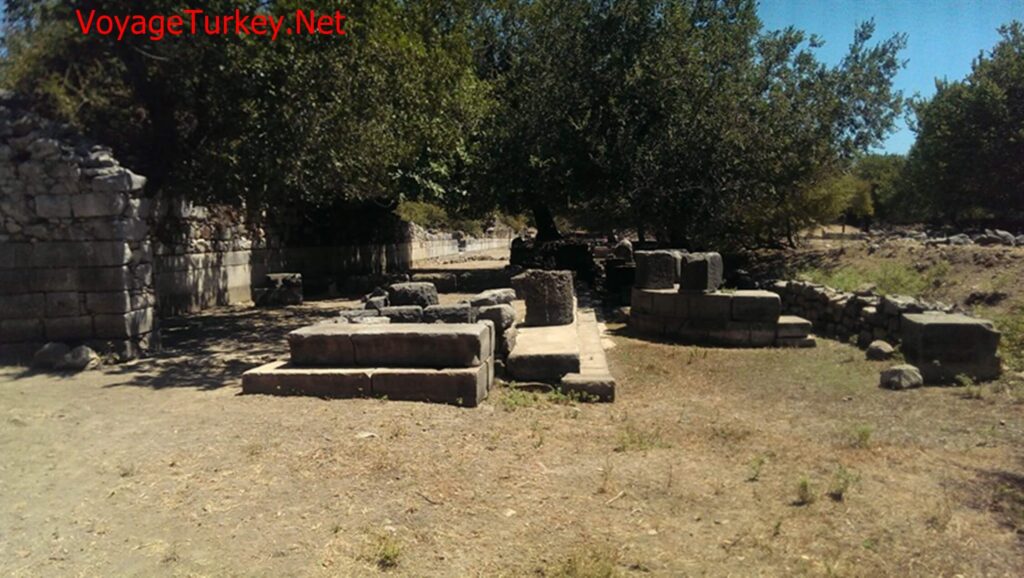
Ancient Ruins of Kaunos Ancient City
The main buildings that can be seen in the ancient city, which is built on a rugged land, are: Acropolis, castle, city walls, theater, church, Turkish bath, warehouse, fountain, agora, stoa and inner-city roads, temples, and sanctuary, harbor, and cemetery.
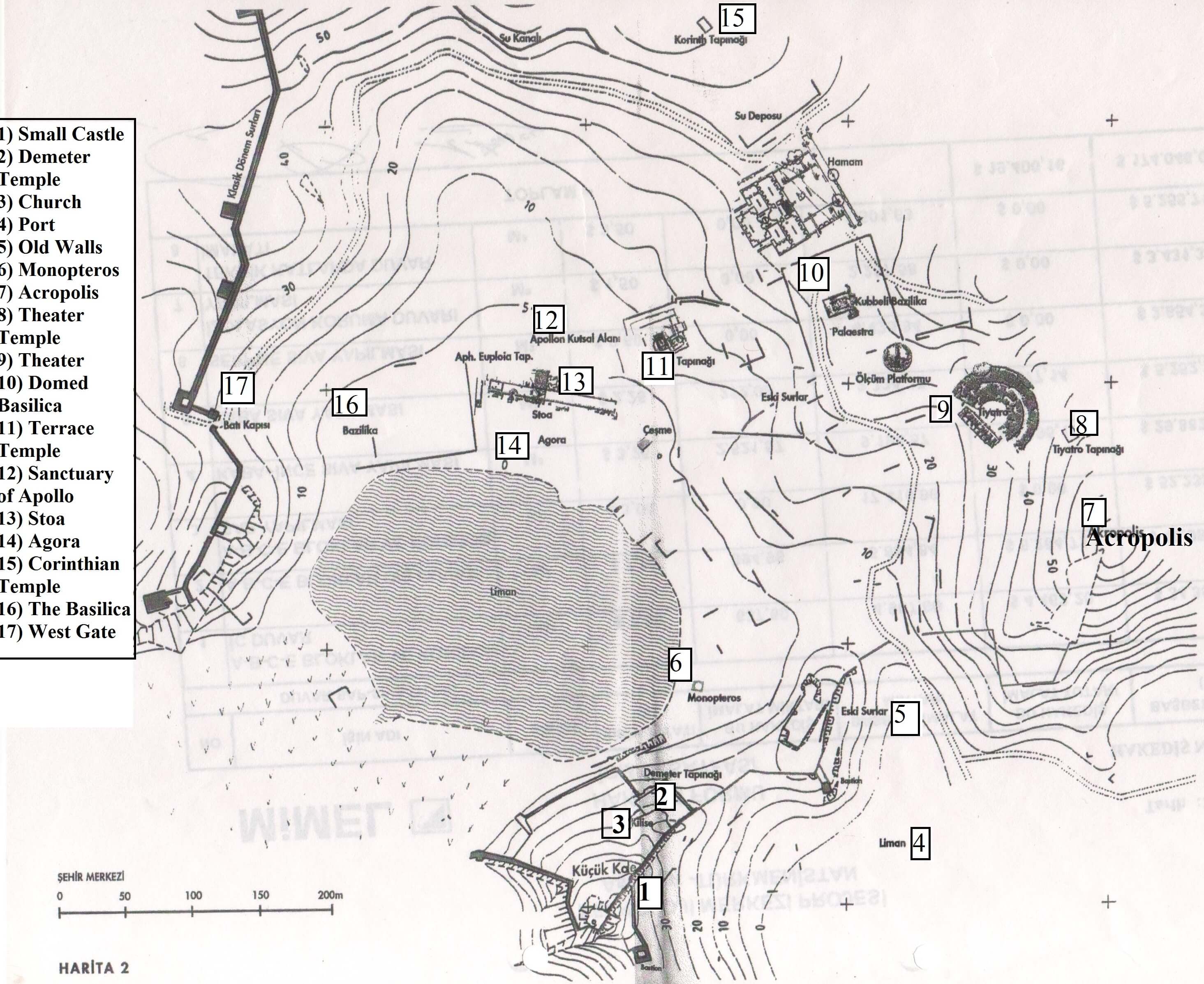
Rock Cut Tombs: Kaunos Tombs of the Kings
When you reach the ancient city, the first remarkable ruins are the tombs of the king. The large and majestic tombs of the king are reminiscent of the in-antis planned ion temples from the façade.
The rock-cut tombs, which can be seen even from Dalyan, were built in the 4th century BC. These rock-cut tombs, which were also used during the Roman Period, differ from the rock-cut tombs in the Urartu, Phrygian, and Lycian regions in terms of facade architecture. In the ancient city of Kaunos, there are rock-cut tombs with a temple facade, which is unique to Kaunos. The Hellenic Temple distinguishes itself from other rock-cut tomb types with its original appearance reflecting the façade architecture and therefore offers a unique appearance.
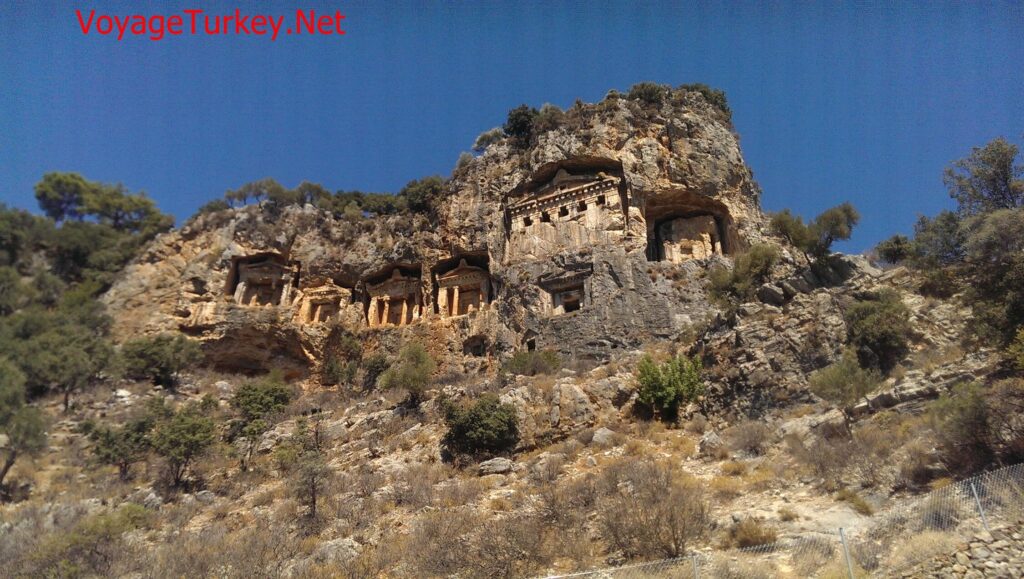
There are three stone beds in the rock-cut tombs where the dead are laid. There are two Ionic columns on the façades and frieze and pediment on the columns.
Harbors in the Kaunos Ancient City
The ancient city of Kaunos has two harbors starting from the Archaic Age to the Hellenistic Period:
One of them is the South Harbor to the southeast of the Küçük Kale (Small Castle). This Port has been in use since the foundation of the city and has become unusable since it was probably filled with sand towards the end of the Hellenistic Age.
The other port is the Inner Harbor (today’s Sülüklü Lake)to the northwest of the Küçük Kale (Small Castle) and below the acropolis. Strabon wrote that Kaunos had a shipyard and a harbor that could be closed. Strabo means Inner Harbor. The Inner Harbor served until the last period of Kaunos. In the face of the dangling of the sea with alluvium in time and the danger of closing the mouth of the harbor, the Kaunosians have always maintained their connections to the sea with the help of Calbis (Dalyan River), which is suitable for the passage of trade ships.
Acropolis of Kaunos Ancient City
Another notable area in the city is the Upper Acropolis, which was founded on a 152-meter-high hill. At the time the acropolis was built, the sea reached the acropolis of Kaunos.
The city is located on the peninsula to the southwest of the Acropolis. In the Archaic and Early Classical Ages, Kaunos was in the bowl between the fortification that passed close to the Acropolis and the Small Fortress and the fortress behind the Fountain Building at the Agora.
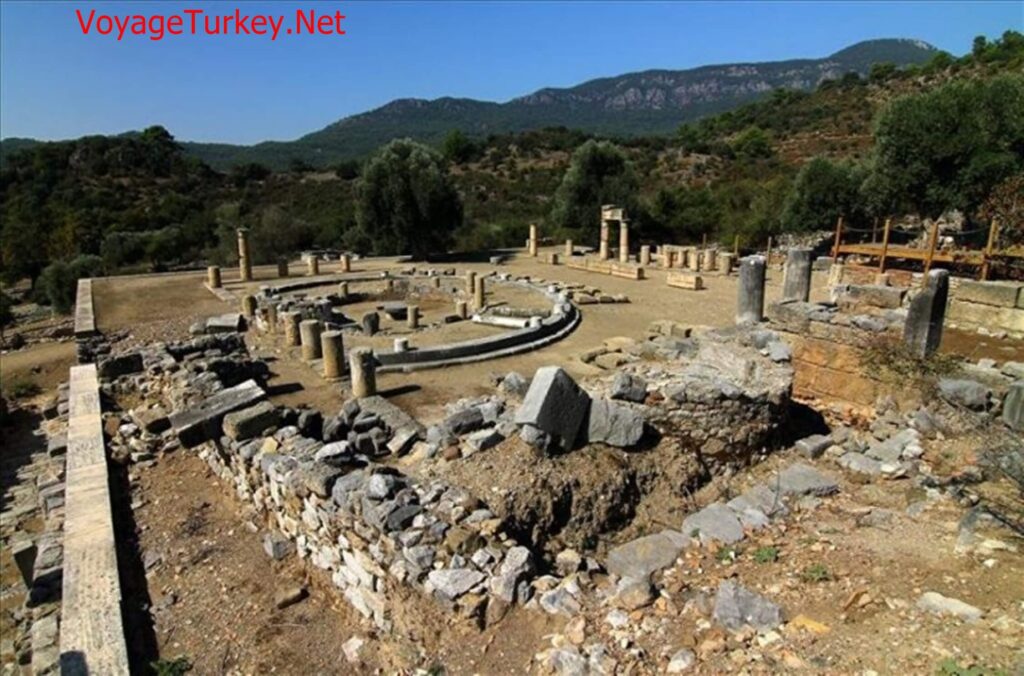
There are fortifications on the summit of the acropolis, whose southern slope is completely steep. These walls supported by towers are from the Middle Ages.
Theater
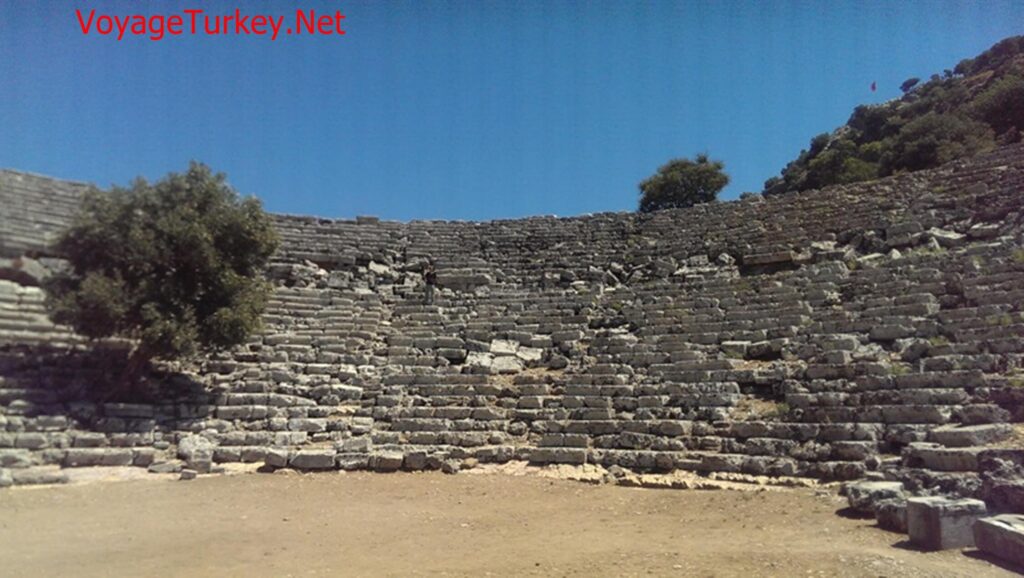
Kaunos Theater, one of the strongest theaters in Anatolia, was built on the western slope of the acropolis. The theater has 33 rows of seats, most of which sit on natural rock and the rest on barrel vaults. The theater, which has a capacity of 5000 people, is similar to the Greek theaters in terms of the plan. It is believed to have been built during the Roman period due to its vaulted infrastructure.
Kaunos Stoa
Stoa is a street, an agora, or another building next to the covered, columned galleries is the name given.
The area where the Stoa was uncovered in the excavations carried out in the north of Sülüklü Göl in the ancient city of Kaunos should have been opened for use especially for religious architecture from the beginning of the 5th century BC.
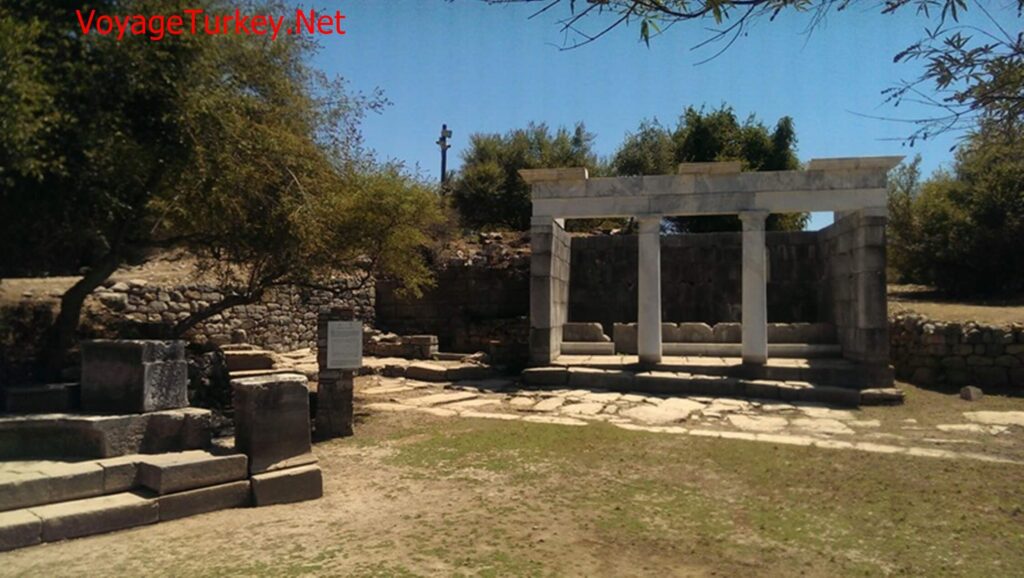
Domed Church
The church is one of the oldest and the best-preserved examples of its type in Anatolia. It is almost in a square shape.
Roman Bath
The bath is one of the best-preserved among the bath buildings of imperial time. It was designed as two major complexes on the same axle in the southwest and northeast direction.
Terrace Temple and Circular Altar
The city was constructed on terraces and significant religious structures like Basileus Kaunios Temple, Apollon Sanctuary, and Demeter Sacred Place are situated on one side. The circular altar on the terrace sanctuary at Kaunos may be sacred to the Basileus Kaunos.
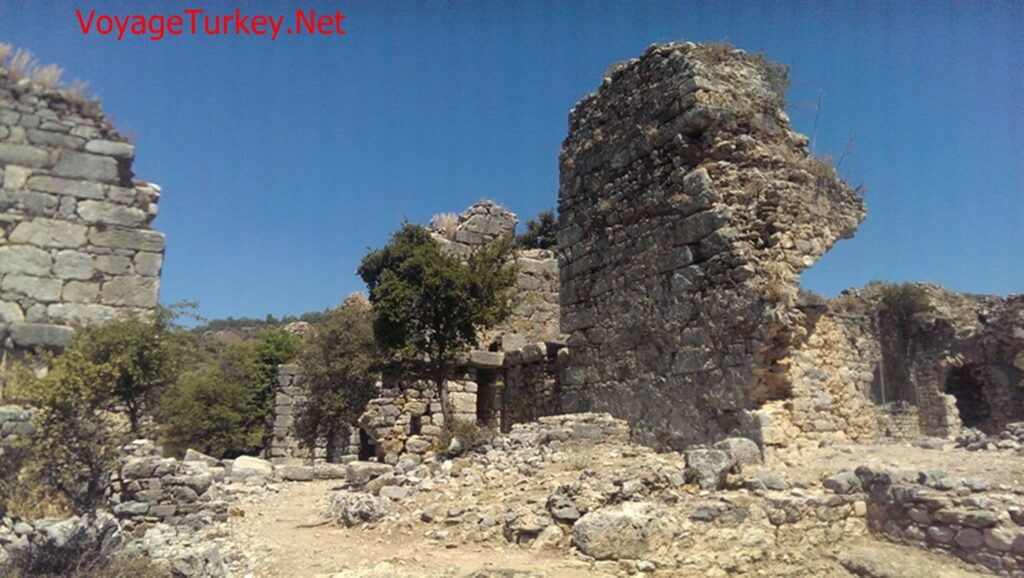
Tips for Visitors
There are panels showing the places to visit in Kaunos, buffet, WC, and cafeteria where you can meet your needs. If you get tired of sightseeing, we recommend you to rest in the shade of centuries-old olive trees rooted between the step blocks of the ancient theater and breathe the history.
Entrance Fees and Visiting Hours
Entrance Fee 14 TL
Visiting Hours
Summer Term (1 April – 31 October) Opening / Closing Time: 08:30 / 19:30
Winter Term (31 October – 1 April) Opening / Closing Time: 08:30 / 17:30
Box Office Closing Hours
Summer Term: 19:00, Winter Term: 17:00
Closed Days: Open every day
